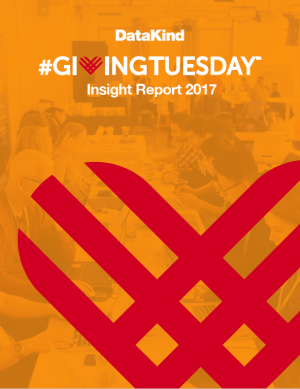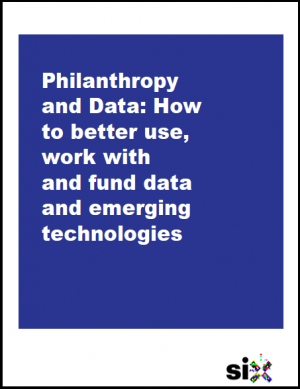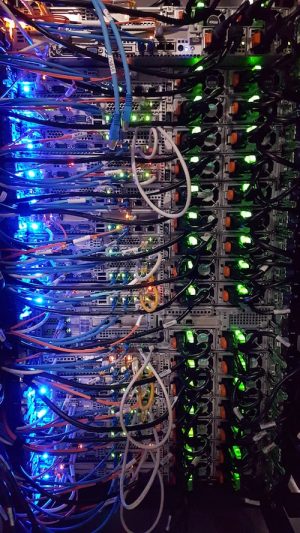 Since its inception in 2012, #GivingTuesday has evolved from a hashtag and social movement to a formal nonprofit that’s responsible for billions of dollars of giving every year (usually on the first Tuesday of every December). In 2017, #GivingTuesday wanted to understand the extent to which the movement had increased giving. It partnered with 36 donation data providers and more than 100 volunteer data scientists. Their deep analysis produced a report suggesting that #GivingTuesday does indeed increase overall giving.
Since its inception in 2012, #GivingTuesday has evolved from a hashtag and social movement to a formal nonprofit that’s responsible for billions of dollars of giving every year (usually on the first Tuesday of every December). In 2017, #GivingTuesday wanted to understand the extent to which the movement had increased giving. It partnered with 36 donation data providers and more than 100 volunteer data scientists. Their deep analysis produced a report suggesting that #GivingTuesday does indeed increase overall giving.
This project is a good example of a collaboration that helped a nonprofit to solve a data problem. Unfortunately, such stories aren’t common. As the nonprofit world becomes increasingly aware of the power of data to achieve lasting impacts, the sector is experiencing a significant gap in capacity to take advantage of opportunities related to data.
 In its Philanthropy and Data report from 2018, Social Innovation Exchange writes: “the divide in terms of resources, capability, and scale between the ‘social good’ and private sectors is vast and growing daily.”
In its Philanthropy and Data report from 2018, Social Innovation Exchange writes: “the divide in terms of resources, capability, and scale between the ‘social good’ and private sectors is vast and growing daily.”
Rather than try to catch up alone, the nonprofit sector needs to partner with government and academia to bridge the gap. While incidents of collaboration will continue to occur, we can take deliberate action to increase the capacity of the sector and its collaborators to use data for public good.
One step is to increase access to existing data. So much of the data about the nonprofit sector, data that the sector would find valuable, is already being collected by municipal, provincial and federal governments. For example, through the administration of taxes, the government collects employment and income data that would be very useful for employment agencies (among others). We don’t need to spend time and money collecting this data again. Instead, we can partner with academia and government to access data that’s already being collected.
Governments of all levels are embracing data sharing through open data portals and directives. While we continue to advocate for open data, the bigger opportunity to the nonprofit sector lies in administrative data. This type of data is collected during the ongoing management of government and government programs. It can be used to identify outcomes of the beneficiaries of the nonprofit sector and to advocate for policy that better serves the community. However, we need the right mechanisms and governance to securely and ethically access the private and identifiable data that will never, and should never, be made available as open data.
 In the United Kingdom, the Justice Data Lab (JDL) provides an example of the mechanisms that can help nonprofits take advantage of government administrative data. Nonprofits working with formerly incarcerated people can submit client lists with the JDL and receive aggregated data showing the recidivism rate of their graduates. They receive a full report and analysis on the results of their program across 14 metrics, including re-offending rates. All results are provided by using administrative data on incarcerations and other linked data sets already collected by the government. Value is created through the secure sharing of government administrative data with nonprofits.
In the United Kingdom, the Justice Data Lab (JDL) provides an example of the mechanisms that can help nonprofits take advantage of government administrative data. Nonprofits working with formerly incarcerated people can submit client lists with the JDL and receive aggregated data showing the recidivism rate of their graduates. They receive a full report and analysis on the results of their program across 14 metrics, including re-offending rates. All results are provided by using administrative data on incarcerations and other linked data sets already collected by the government. Value is created through the secure sharing of government administrative data with nonprofits.
In Canada, significant progress has been made to do this within government and academia. Statistics Canada, through the Social Data Linkage Environment (SDLE) and the Linkable File Environment (LFE), already has the mechanisms in place to allow access to administrative data (such as recidivism rates in Nova Scotia or legal aid supports in Saskatchewan). Policy-makers and analysts in government are increasingly able to take advantage of these tools to inform their work. Through the Research Data Centre model, the academic community is also able to gain access to many datasets created in the SDLE and LFE environments.
The partnership between government and academia provides an entry point for the nonprofit sector to participate in this opportunity. As evidenced by examples such as the Homeless Hub, there is a strong working relationship between the nonprofit sector and the academic community. Expanding these partnerships to include access to government administrative data provides a natural starting point for this work.
The conditions are right for the nonprofit sector to tap into the value of government administrative data. The nonprofit initiative we started, Powered by Data, has created a Data Policy Coalition to help the sector organize around this issue. And the federal government has the mechanisms for linking and sharing administrative data within government. There are examples from around the world of how the nonprofit sector has benefited from administrative data. What we need now is to work with our academic partners to engage with government on how we can jointly create value from administrative data. We need to start this journey, rather than repeatedly collecting data that already exists.
Michael Lenczner is CEO of Ajah, a company that develops online tools for fundraisers, and is Director of Powered by Data, a nonprofit initiative launched by Ajah that helps the nonprofit sector use data to increase its impact. He’s on Twitter and LinkedIn.
Friday, January 15, 2021 in Data Discoveries
Share: Twitter, Facebook



